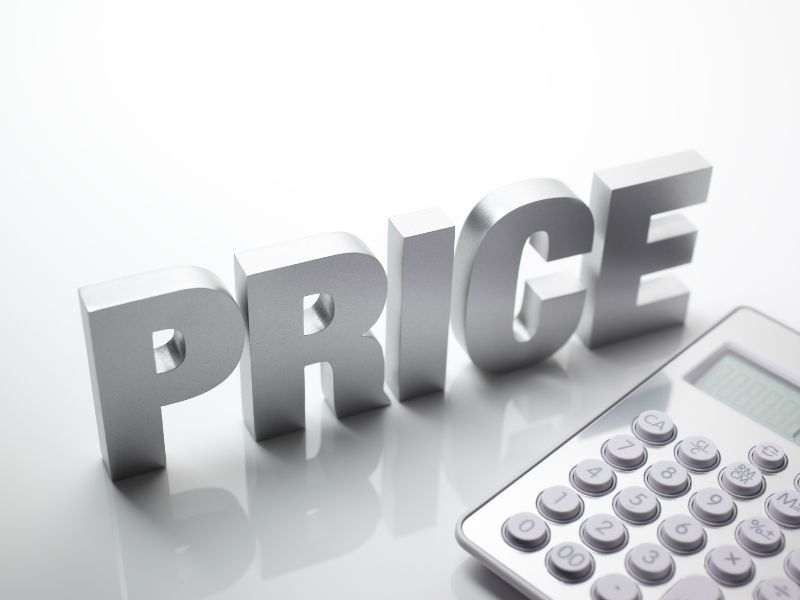5 Pricing Strategies That Will Help You Grow Your Local Business
If you’re a small business owner or entrepreneur looking to optimize your pricing and skyrocket your profits, you’ve come to the right place. In this article, we’ll dive into the art of strategic pricing, catering specifically to local markets. Get ready to unlock the secrets of successful pricing tactics that will have your competitors green with envy!
Understanding the Local Market Landscape
Before we delve into the nitty-gritty of pricing, it’s essential to grasp the unique characteristics of the local market. Local customers have distinct preferences, needs, and spending habits that can significantly impact your pricing decisions. Embrace your inner Sherlock Holmes and conduct some market research to identify what your local customers really want and how much they are willing to pay for it.
Here are a few key factors to consider when understanding your local market landscape:
- Demographics: What is the age range, income level, and education level of your target customers? Where do they live? What are their lifestyles like?
- Competition: Who are your main competitors? What are their prices? What are their strengths and weaknesses?
- Costs: What are your own costs? This includes the cost of your products or services, as well as your overhead costs.
- Demand: How much demand is there for your products or services? Is the market growing or shrinking?
- Pricing trends: What are the general pricing trends in your industry? Are prices rising or falling?

Once you have a good understanding of your local market landscape, you can start to develop a pricing strategy that is tailored to your specific needs.
Here are a few additional tips for understanding your local market landscape:
- Talk to your customers: The best way to understand what your customers want and need is to talk to them directly. Ask them about their preferences, their budget, and their satisfaction with your prices.
- Survey your customers: If you have a large customer base, you can conduct a survey to get more detailed feedback. This can help you identify any pricing pain points that your customers are experiencing.
- Use online tools: There are a number of online tools that can help you research your competition and track pricing trends. This information can be invaluable in developing a competitive pricing strategy.
By taking the time to understand your local market landscape, you can set prices that are more likely to appeal to your target customers and help you grow your business.
Mastering the Art of Competitive Pricing
One crucial aspect of pricing for local businesses is keeping a close eye on your competitors. You don’t need to don a trench coat and sunglasses, but staying aware of the prices they offer for similar products or services is essential. You don’t want to be outpriced, but you also don’t want to undersell yourself. Strike a balance that reflects the value you bring to the table while staying competitive in your local market.
Here are a few tips for mastering the art of competitive pricing:
- Do your research: The first step is to gather as much information as you can about your competitors’ prices. This includes their website, their online listings, and their physical stores. You can also use online tools like Google Trends and SEMrush to track their pricing history.
- Identify your strengths and weaknesses: Once you know what your competitors are charging, you need to take a close look at your own business. What are your strengths? What are your weaknesses? How do you compare to your competitors in terms of quality, customer service, and location?
- Set your own prices: Once you understand your competitors and your own business, you can start to set your own prices. There are a few different pricing strategies you can use, such as cost-plus pricing, competitive pricing, and value-based pricing. The best strategy for you will depend on your specific business and your target market.
- Be flexible: The market is constantly changing, so you need to be flexible with your pricing. If your competitors lower their prices, you may need to do the same. But if you’re offering a superior product or service, you can charge a premium.
- Communicate your value: Don’t just set your prices and forget about them. You need to communicate the value of your products or services to your customers. This can be done through your website, your marketing materials, and your customer service.
By following these tips, you can master the art of competitive pricing and set prices that will help you grow your local business.

The Power of Psychological Pricing
Ah, the magic of psychology! You might not be a mind reader, but you can certainly use some clever tricks to influence your customers’ purchasing decisions. Let’s explore a couple of psychological pricing strategies that have been proven to work like a charm.
- Anchoring is a psychological pricing strategy that relies on the fact that people tend to rely on the first piece of information they’re given when making a decision. For example, if you see a pair of shoes on sale for $50, you’re more likely to think they’re a good deal if you saw them on sale for $75 earlier in the day.
- Odd-even pricing is another psychological pricing strategy that relies on the way people perceive numbers. People tend to perceive prices that end in 9 or 5 as being lower than prices that end in 0 or 2. For example, you’re more likely to think $9.99 is a good deal than $10.00.
- Bundle pricing is a psychological pricing strategy that involves selling two or more products together for a lower price than if they were sold separately. For example, you’re more likely to buy a printer and ink cartridges together if you can get a discount on the ink cartridges.
- Free shipping is a psychological pricing strategy that can make your products seem more affordable. People tend to focus on the fact that they’re not paying for shipping, even if the price of the product is higher than it would be if shipping were not free.
- Scarcity pricing is a psychological pricing strategy that involves creating the perception that a product is in limited supply. This can make people more likely to buy the product, even if they don’t really need it. For example, you’re more likely to buy a concert ticket if you know it’s the last one available.
These are just a few of the many psychological pricing strategies that you can use to influence your customers’ purchasing decisions. By understanding how psychology affects the way people make decisions, you can use these strategies to set prices that will help you grow your business.

Embracing the Power of Bundling
Who doesn’t love a good deal? Bundling is a powerful pricing strategy that can work wonders for local businesses. Offering packages that combine multiple products or services at a discounted price entices customers to purchase more, increasing your overall revenue. Plus, it simplifies their decision-making process, making it a win-win!
The Allure of Limited-Time Offers
If you’ve ever found yourself rushing to buy something because the clock was ticking on a limited-time offer, you’ve experienced the power of urgency in action. Creating a sense of urgency can be a potent motivator for customers, pushing them to make a purchase before they miss out on a great deal. Experiment with limited-time discounts or exclusive offers to give your sales a boost.

The FAQ Section: Answering Your Burning Questions
Q1: Are pricing strategies different for local businesses compared to larger enterprises?
Absolutely! Local businesses have the advantage of being closer to their customers, which allows them to understand their needs better. Additionally, local markets can have unique dynamics that larger enterprises might not grasp. Strategic pricing in local businesses involves catering to the specific preferences and spending habits of the local community, whereas larger enterprises may take a more broad-stroke approach.
Q2: Is it possible to charge premium prices in a local market?
Definitely! Premium pricing can work for local businesses that offer exclusive or high-value products and services. However, it’s essential to establish your brand’s unique selling proposition (USP) and communicate the added value customers will receive. People are willing to pay more if they believe they’re getting something extraordinary in return.
Q3: How often should I review and adjust my pricing strategy?
The local market landscape can change rapidly, so it’s essential to regularly review your pricing strategy. Keep an eye on competitor pricing, monitor customer feedback, and adapt to any shifts in demand or supply. Quarterly reviews are a good starting point, but don’t be afraid to tweak your prices more frequently if necessary.
Q4: Should I offer discounts to attract customers?
Discounts can be a valuable tool to attract new customers and boost sales, but use them judiciously. Overusing discounts may lead customers to perceive your products or services as lacking value. Instead, consider limited-time offers or loyalty programs to reward existing customers while enticing new ones.
Conclusion
Congratulations! You’ve now unlocked the secrets of effective pricing strategies for local products and services. By understanding your local market, mastering competitive pricing, utilizing psychological tactics, and embracing bundling and limited-time offers, you’ll be well on your way to driving your small business to success. Remember, pricing is not set in stone, so be willing to experiment, adapt, and most importantly, keep your customers at the heart of your pricing decisions. Now go forth and conquer the local market with confidence!



